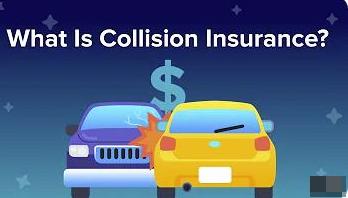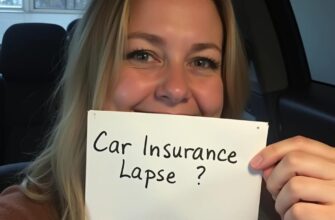Finding the right auto insurance that fits your needs and budget can be tricky. Getting quotes from multiple providers and comparing coverage is key to making sure you have the best protection at an affordable rate. This comprehensive guide will walk you through everything you need to know to get the ideal car insurance policy.
What Factors Determine Your Premiums?
Auto insurance rates are based on a number of factors that insurance companies use to analyze and determine your level of risk. Understanding these key factors can help you get lower premiums.
Your Driving Record
Having past tickets, accidents, DUIs or other violations will increase your risk profile in the eyes of insurers. Maintaining a clean driving record is one of the best ways to qualify for lower rates.
Your Credit Score
In most states, your credit-based insurance score factors into your premiums. Maintaining good credit demonstrates responsibility and can mean significant savings on your policy.
Your Location
Where you live plays a big role in premium costs. Urban areas typically have higher rates due to more accidents, traffic, vandalism and theft.
Your Vehicle
The make, model, age and value of your car also determine premiums. Sports cars and luxury vehicles that are expensive to repair get hit with higher rates.
Your Coverage Limits
The level of coverage you choose directly impacts your bottom line. Lower liability limits, higher deductibles and minimal add-ons keep premiums affordable.
Your Age
Younger drivers are statistically more prone to accidents and violations, resulting in steep rate hikes. But premiums gradually decrease as you gain more experience behind the wheel.
What Are the Main Types of Auto Insurance Coverage?
There are several standard types of coverage included in most policies. State minimum requirements vary, so make sure you understand the specifics for your region.
Liability Insurance
This covers damages that you cause to others in an at-fault accident. It’s required in all states and generally includes two components:
- Bodily Injury Liability – Covers medical expenses for injured parties
- Property Damage Liability – Covers repairs or replacement costs for damaged property
Liability limits are stated in a format like 50/100/50. Higher limits mean more coverage, but also higher premiums.
Collision Insurance
This optional coverage pays for repairs to your vehicle after an accident, regardless of fault. It also covers damage from hitting an object.

Comprehensive Insurance
This also optional coverage helps pay to replace or repair your car if it’s damaged by something other than a collision, like theft, vandalism, hail, fire or natural disaster.
Uninsured/Underinsured Motorist
This protects you if you’re hit by a driver with no insurance or insufficient coverage. Required in some states.
Personal Injury Protection (PIP)
Also known as no-fault coverage, PIP helps pay medical expenses for you and your passengers after an accident, up to policy limits. Required in some states.
Roadside Assistance
Add-on coverage that provides help with breakdowns, flat tires, lock-outs, battery jumps and running out of gas.
How Can I Get the Cheapest Car Insurance Rate?
Here are some smart strategies to use to find the lowest auto insurance premiums possible.
- Shop around – Get quotes from at least 5-6 different top insurers. Rates can vary greatly between companies.
- Raise your deductible – Opting for a higher deductible of $500, $750 or $1000 brings down premium costs. Just be prepared to pay more out-of-pocket if you have a claim.
- Limit coverage – Narrow down to just the minimum liability and uninsured motorist coverage required in your state. Skip optional coverages to save money.
- Ask about discounts – Take advantage of any discounts you may qualify for like good driver, good student, loyalty programs, anti-theft devices and more.
- Improve your credit – If you have fair or poor credit, work on increasing your score to get a better insurance rate.
- Consider usage-based programs – Some insurers offer special programs with customized rates based on actual vehicle usage and driving habits monitored with an app or device.
- Drop collision/comprehensive – Removing these optional coverages for an older car of low value can make sense and save substantially.
- Increase liability limits over time – As your income and assets grow, you may want to gradually raise liability limits for better protection.
Show video about cheapest car insuranse in 2023:
How to Get the Right Amount of Coverage
Choosing auto insurance limits can be confusing. Here are some tips for picking coverage levels that protect you without overpaying:
- Make sure you meet state minimum liability requirements as a baseline.
- Match liability limits to your personal financial situation – income, savings, assets like a home.
- 100/300/100 is a common coverage level for policies. Increase if you have significant assets to protect.
- Only add optional coverages if they fit your budget and needs. Pass on what you can afford to pay out-of-pocket instead.
- For collision and comprehensive, choose deductibles you can afford like $500 or $1000 to keep premiums down.
- Increase uninsured motorist limits to match your liability limits for complete protection.

The Best Auto Insurance Companies
While costs vary widely between insurers, some top companies tend to offer the best rates and service consistently. Here are a few to consider getting quotes from:
- Geico – Among the lowest premium options for drivers with clean records.
- Progressive – Offers competitive pricing and convenient tools for managing your policy.
- State Farm – Known for local agents and discounts for combining home and auto policies.
- USAA – Exclusive to military members and their families. Consistently affordable premiums.
- Travelers – Provides a wide range of coverage options and multi-policy discounts.
How to File an Auto Insurance Claim
If you need to file a claim, here are some tips for making the process go smoothly:
- Report the accident to your insurer promptly, even if it’s minor. There are usually time limits for filing claims.
- Take photos of damage to all vehicles and the accident scene if it’s safe to do so.
- Get contact info for witnesses and any other drivers involved including their insurance details.
- Save all related receipts and documents, like accident reports, medical bills and car repair estimates.
- Cooperate fully with your adjuster by providing any additional details they request.
- Know the details of your coverage and limits to avoid surprises about reimbursement amounts.
- Be aware that filing a claim can increase your premiums at renewal time. Weigh the cost before submitting minor claims.
How Much is Full Coverage Insurance on a Used Car?
Full coverage insurance generally includes comprehensive and collision, plus liability and uninsured motorist coverage. Costs vary dramatically based on the age, make and model of the used vehicle.
For example, a recent model used Honda Accord may only cost $100-$150 per month for a full coverage policy with 100/300/100 liability limits and a $500 deductible. However, insuring an older luxury vehicle like a used BMW 7 Series can run $200-$300 per month for the same coverage.
A used economy car such as a 5-year old Toyota Corolla could potentially be around $75-$100 per month for full coverage. On the other hand, a sports car like a used Porsche Boxster may be upwards of $250-$350 monthly.
To get an accurate auto insurance quote for full coverage on a used vehicle, always provide details like the year, make and model when requesting quotes online or talking to agents. Rates can fluctuate wildly depending on the specifics of the car.
Key Takeaways
- Shop around extensively since car insurance rates can vary widely between different insurers.
- Only purchase the types of auto insurance coverage you truly need to keep your premium costs down.
- Ask about all available discounts you may be eligible for to save money.
- Raise your deductibles and limit coverage to lower your premiums if money is tight.
- Maintain a clean driving record, improve your credit score and compare quotes annually to find the best deal on car insurance.








